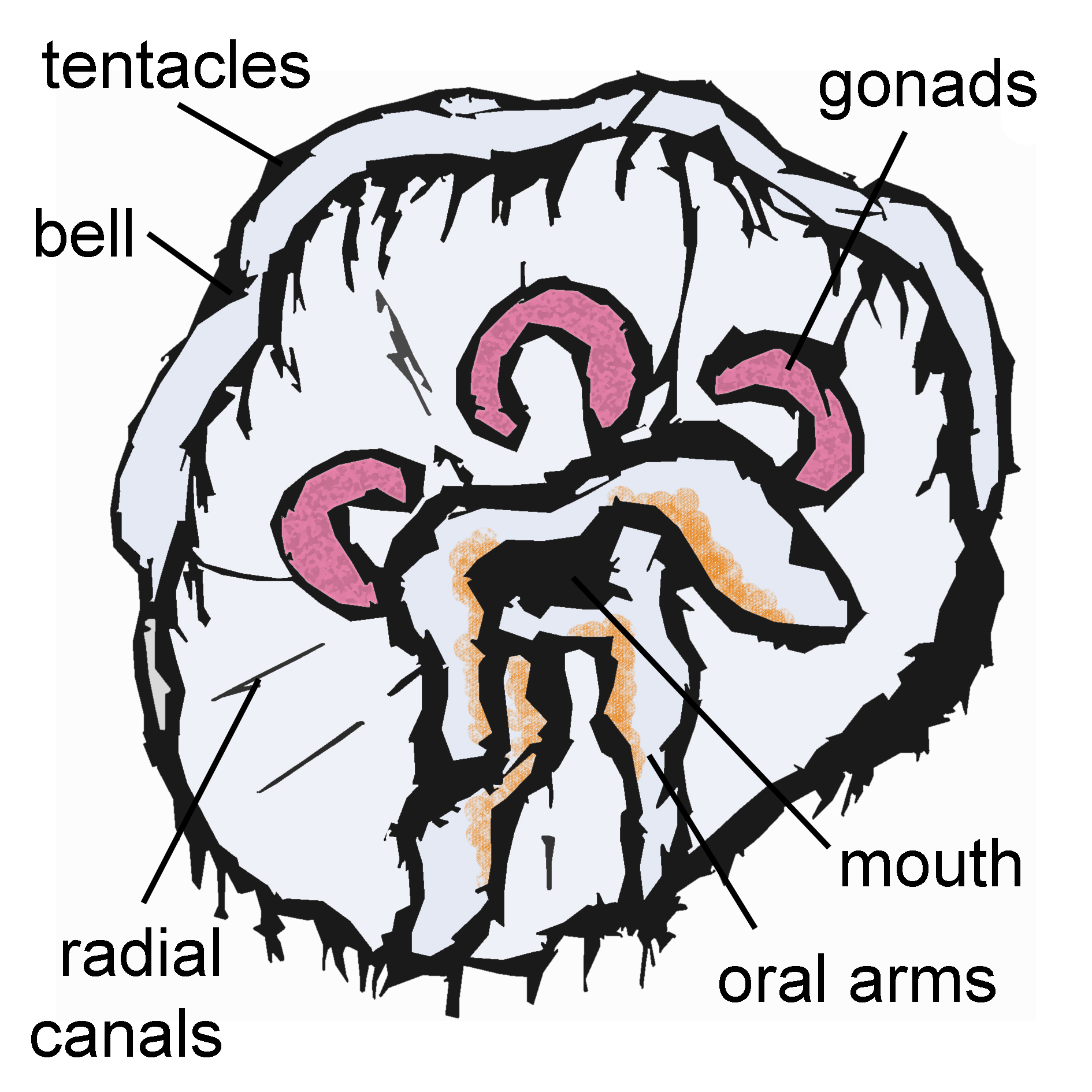Background Information
Moon jelly, or Aurelia aurita, are probably the most common and widely recognized type of jellyfish. They can be found in the Atlantic, Arctic and Pacific Oceans near the coasts. The animal ranges in size from 5cm to 40cm across. The moon jelly is easily recognizable by its four violet or pink crescent shaped gonads on the underside and at the centre of its translucent bell or umbrella. Also, its bell is thicker towards the middle, thinning towards the edge. Like many other species of jellyfish, the moon jelly’s ability to move by itself is limited, so it is subjected to the water currents of the ocean,
Aurelia aurita has two main stages in its life cycle – the polyp stage (asexual reproduction) and the medusa stage (sexual reproduction). A mature polyp reproduces asexually, known as budding forming an entire colony of polyps. Polyps specializing in reproduction produce ephyra (small medusae) by budding. The medusae swim off and mature. They then reproduce sexually. From the egg and the sperm of two medusae, a zygote is formed. The zygote develops into a planula (larva). The planula larva leaves the adult medusae, finds a shaded surface, and attaches itself to it. The planula eventually develops into a new polyp, and the life cycle of the Aurelia aurita starts again.
Game Description
The above information gives a brief overview of the Moon Jelly. This board game will then, through trivia questions, teach more about the Moon Jelly - general information, habitat, body system, and life cycle.
Game Instructions
Objective
Be the first player to move your four “jellyfish” (game pieces) once around the entire track and into your finish circles
Game Materials
- Game board
You can make your own or print out this one - Game pieces
You can make your own or print out these pieces - Trivia questions
- A die
Playing the Game
- Each player chooses a corner of the game board and the four pieces corresponding to the colour of that corner.
- The player who rolls the highest number starts the game. The player to the starter's left is next to roll.
- Each player must roll a six in order to move each game piece from the “home” circles to the “start” circle.
- The pieces are moved clockwise (to the left) around to game board according to the number rolled.
- After each roll, to determine whether or not the player will get to move a piece, the player must answer a trivia question of a certain category depending on the colour the game piece is being moved into.
Red: General Information
Green: Habitat and Food
Yellow: Body System/Parts
Blue: Life Cycle
If the player does not answer the question correctly, the game piece may not be moved.
- If a player’s “jellyfish” is moved into a circle already occupied by an opponent, the opponent’s piece must be returned to the “home” circles to start again.
- If a player has more than one piece on the board (out of the “home” circles), any piece may be moved.
- When each piece has been moved around the board once, it must enter the “finish” circles (marked one, two, three, four). The corresponding numbers must be rolled to move the pieces into the circles (i.e. a one must be rolled to move a piece into the circle marked “one”.
- To move into these circles, trivia questions under the “Miscellaneous” category must be answered correctly.
- A player may choose not to move any pieces if it is decided that the number rolled will not be beneficial.
Winning
The winner is the first player to get all four “jellyfish” into the “finish” circles of the pieces’ colour.
Information on the Internet
- Wikipedia: information about the moon jelly collected from various sources
- ARKive: includes movies, images and information about various species (including the moon jelly)
- Marine Biology: has information on and images of all things marine
- Sea Science: general information about jellyfish with brief overviews of some specific species
- Animal Diversity Web: contains information such as habitat, feeding and behaviour of the moon jelly





 Go to quick links
Go to quick search
Go to navigation for this section of the ToL site
Go to detailed links for the ToL site
Go to quick links
Go to quick search
Go to navigation for this section of the ToL site
Go to detailed links for the ToL site